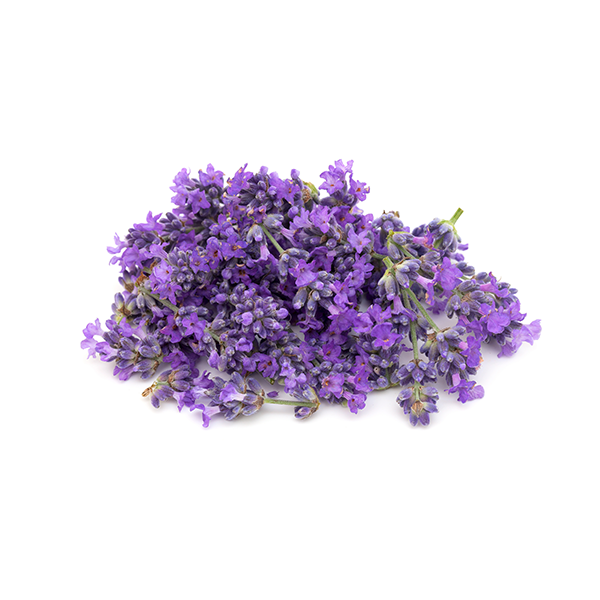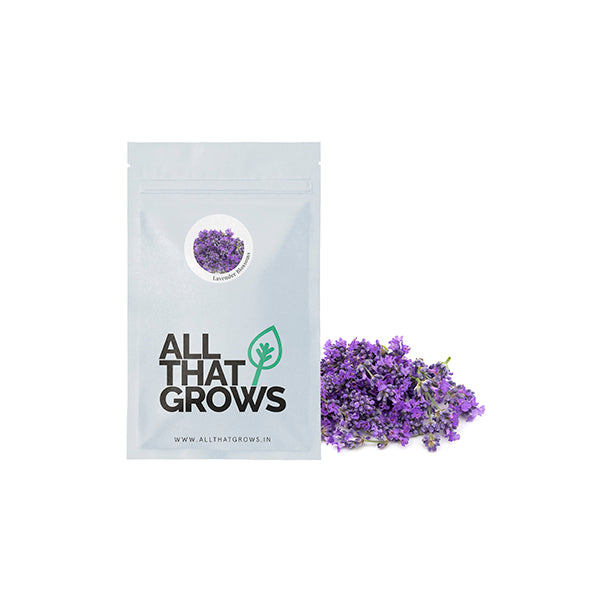



- SOWING
TIMESeptember to November
- Sowing
DistanceLine to Line - 10 to 12 inches, Plant to Plant - 20 to 25 inches
- Fruit
WeightN/A
- Fruit
ShapeN/A
- Days to
maturity110 to 140 days
- Details
- How to sow
- Reviews
Lavender is a perennial herb plant with heavenly fragrance. Known for its signature aroma produced by purple flowers, lavender is one such culinary wonder that offers its breeder bountiful of goodies to cook & experiment with. Lavender plant hails from the mint family which may explain its sweet smelling aroma. Lavender flower can be used in fresh or dried form depending on the recipe. Lavender works well in tea or as a garnish/decorative addition to desserts based on chocolate & vanilla. Lavender flowers also makes a great ingredient for syrups and aromatic oils.
Planting instructions
Lavender plants are usually planted the best in spring as the soil is warming up. However, if you are planting in the fall, make sure to use bigger plants. This will ensure their survival through the winter season. Sow the seeds 2 to 3 feet apart because Lavender plants can grow to a height of 1 to 3 feet. Lavender plants thrive in poor or moderately fertile soil. But, if you have heavy or clay soil, adding some organic compost or manure will help to improve drainage. Rock or pea gravel works particularly well as organic mulch to keep the weeds at bay. However, keep the mulch away from the crown of the plant.
Lavender plants do not need regular watering. After planting, until the plants have established, you can water them once or twice a week. Water the seedlings every 2 to 3 weeks until buds start to grow. From this stage to the harvesting season, increase the water dosage to once or twice a week.
When green leaves start to appear at the base of the plant, prune them by removing about ⅓ rd inch from the top.
Do not exclude sunlight as it plays a great role in the germination of the seedlings.
Growing Requirements
Pests
Four lined plant bug, whitefly, aphids, spittlebug are the pests that can affect the lavender plant which can be kept with natural predators or organic neem sprays.
Soil
Lavender prefers well-drained, fertile soil for its optimum growth.
Spot
Lavender prefers full sun to bloom well.
Temperature
For best results, grow these seeds at a temperature ranging between 22 to 24°C(70-75°F).
watering
Water moderately and make sure that the soil is not too moist. In case of necessity, water from below.
how to harvest
Prune and harvest once the flowers start to bloom.
You can gather the flowers into a bunch. Chop the lavender stems properly for better blooming. Get rid of the dead leaf matter.
Use a scissor to cut the lavender above the woody growth.

Customer Reviews
The productiveness of any seed we sell is subject to your local climatic conditions*, the sowing method you adopt, and your commitment to the planting process. We give no warranty, expressed or implied, and are in no way responsible for the produce.
Please note that all our seasonal recommendations/ sowing information is as per the local climatic conditions. *For more information on the optimum conditions required for growing seeds in your region, please contact us at, hello@allthatgrows.in or Whatsapp us at, +91 8544865077
Questions & Answers
Have a Question?
Be the first to ask a question about this.




Lavender Blossoms
Seed Type : Non-Hybrid, Open Pollinated and Non-GMO
Plant Height :Grows Up To 30 to 40 inches
Flower Character:Spiky With Strong Fragrance
Colour : Purple shrubs with green foliage
Specifications :Beautiful fragrant flowers hedges
Lavender is a perennial herb plant with heavenly fragrance. Known for its signature aroma produced by purple flowers, lavender is one such culinary wonder that offers its breeder bountiful of goodies to cook & experiment with. Lavender plant hails from the mint family which may explain its sweet smelling aroma. Lavender flower can be used in fresh or dried form depending on the recipe. Lavender works well in tea or as a garnish/decorative addition to desserts based on chocolate & vanilla. Lavender flowers also makes a great ingredient for syrups and aromatic oils.
Seed Type : Non-Hybrid, Open Pollinated and Non-GMO
Plant Height :Grows Up To 30 to 40 inches
Flower Character:Spiky With Strong Fragrance
Colour : Purple shrubs with green foliage
Specifications :Beautiful fragrant flowers hedges
- SOWING
TIMESeptember to November
- Sowing
DistanceLine to Line - 10 to 12 inches, Plant to Plant - 20 to 25 inches
- Fruit
WeightN/A
- Fruit
ShapeN/A
- Days to
maturity110 to 140 days
Planting instructions
Lavender plants are usually planted the best in spring as the soil is warming up. However, if you are planting in the fall, make sure to use bigger plants. This will ensure their survival through the winter season. Sow the seeds 2 to 3 feet apart because Lavender plants can grow to a height of 1 to 3 feet. Lavender plants thrive in poor or moderately fertile soil. But, if you have heavy or clay soil, adding some organic compost or manure will help to improve drainage. Rock or pea gravel works particularly well as organic mulch to keep the weeds at bay. However, keep the mulch away from the crown of the plant.
Lavender plants do not need regular watering. After planting, until the plants have established, you can water them once or twice a week. Water the seedlings every 2 to 3 weeks until buds start to grow. From this stage to the harvesting season, increase the water dosage to once or twice a week.
When green leaves start to appear at the base of the plant, prune them by removing about ⅓ rd inch from the top.
Do not exclude sunlight as it plays a great role in the germination of the seedlings.
Growing Requirements
Pests
Four lined plant bug, whitefly, aphids, spittlebug are the pests that can affect the lavender plant which can be kept with natural predators or organic neem sprays.
Soil
Lavender prefers well-drained, fertile soil for its optimum growth.
Spot
Lavender prefers full sun to bloom well.
Temperature
For best results, grow these seeds at a temperature ranging between 22 to 24°C(70-75°F).
watering
Water moderately and make sure that the soil is not too moist. In case of necessity, water from below.
how to harvest
Prune and harvest once the flowers start to bloom.
You can gather the flowers into a bunch. Chop the lavender stems properly for better blooming. Get rid of the dead leaf matter.
Use a scissor to cut the lavender above the woody growth.



 Sign In
Sign In








